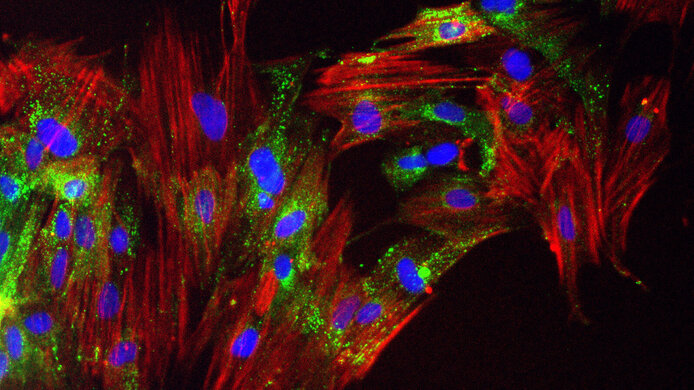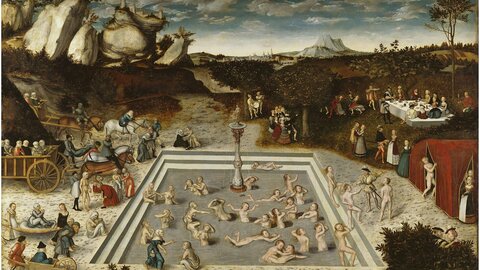Biobank furnishes information on therapy resistance in prostate cancer

While a shock for those getting the diagnosis, prostate cancer has good chances of recovery if detected early. “As long as the tumor is localized, removal by surgery or radiotherapy can achieve very good results,” explains Natalie Sampson, researcher at the Department of Urology at the Medical University of Innsbruck. If the tumor is not detected in time or returns after treatment, however, it can spread and develop resistance to the remaining therapy options.
This resistance to therapy is the main reason why prostate cancer remains one of the most common causes of cancer death in men. The FWF provides funding for Sampson's research project “Therapy resistance in prostate cancer”, a collaborative project with a research group from Bern, which is investigating the mechanisms behind resistance. Thanks to Austria's participation in the project, Sampson's team has now succeeded in building up an extensive biobank of patient material. The researchers are not investigating the tumor cells themselves, but cells from the surrounding connective tissue. Their findings could also be groundbreaking for other types of cancer.
New biobank shows stages of cancer progression
“Our biobank contains more than 400 cell lines of tumor-associated connective tissue cells, fibroblasts, from more than 100 patient samples, thus giving us a platform to investigate the progression of the cancer and test new drugs,” notes Sampson. The researchers have already succeeded in identifying certain subtypes of cancer-associated fibroblasts in the sample material. They suspect that the cell types they discovered have a decisive influence on the progression of the disease and the development of resistance. The results are currently being prepared for publication.
In sum total, the collected cell lines illustrate the dynamic changes occurring in the environment of the tumor. The surrounding connective tissue cells, for instance, release pro-inflammatory messenger substances in the early tumor stage and tend to help slow down cancer development. As the disease progresses, however, they transform into tumor-promoting subtypes. At that stage they inter alia form the matrix tissue of the tumor, which gives it firmness, protects it from attack by immune cells and impairs drug uptake by the tumor cells. At the same time, the connective tissue cells show changes in their sensitivity to current therapeutic approaches.
A new biobank contains more than 400 cell lines from connective tissue samples taken from over 100 patients with prostate cancer.
Scientists are looking for new approaches for drug development in the environment of the cancer cells. The biobank is also intended to help detect resistance earlier.
The androgen receptor as a key factor
“The prostate is a target organ in the hormonal system and depends on male steroid hormones such as androgen. That's why therapy tries to inhibit the effect of this hormone on the tumor cells,” says Sampson, explaining one of the most important remaining options if surgery or radiotherapy are unsuccessful. As it turns out, however, the early activated subtype of cancer-associated fibroblasts also carries the receptor for androgen. During later stages of fibroblast activation, the production of this receptor is suppressed, making this tumor-promoting cancer-associated fibroblast subtype resistant to therapies targeting androgen.
Sampson suspects that therapeutic approaches targeting the androgen receptor of cancer cells could thereby inadvertently promote the progression of the tumor environment, and he advocates holistic therapeutic approaches: “Tumors are complex ecosystems that rely on communication networks between different cell types. It is not sufficient to just treat the tumor cells. We must also cut off the interactions with the surrounding tissue in order to block these critical escape routes of the tumor cells so that the available therapies can have a better effect.”
Change of perspective in cancer therapy
Sampson considers it all-important that research into individual types of cancer also contributes to our understanding of the fundamental mechanisms of cancer. “Our findings on the remodeling of connective tissue apply not only to prostate cancer, but also to other solid tumors,” she emphasizes. In recent years, research into the microenvironment of tumors has resulted in a change of perspective in cancer therapy. A great number of clinical studies on various types of cancer are ongoing worldwide, investigating how strategies against tumor cells can be combined with approaches that target the tumor microenvironment.
“Our biobank can make a contribution to drug development. We are currently testing active substances for their ability to prevent the transition from the early to the late activation stage of fibroblasts. We are even able to convert advanced stages back into a deactivated form – but only in the laboratory for the time being,” says Sampson, describing the potential applications. She is also interested in the question of how resistance can be detected at an early stage. She hopes that the biobank and the better understanding of fibroblast activation stages will lead to new methods for informing patients of an increased risk in good time. “The biobank is a valuable resource and a big step in the right direction for our research. We are also grateful to the patients who were willing to provide tissue for research,” says Sampson.
Personal details
Natalie Sampson is a molecular biologist and heads a research group at the Medical University of Innsbruck in the field of urology. With her research, which focuses on the development of prostate carcinomas, Sampson seeks to contribute to the understanding of the fundamental mechanisms of cancer. The project “Therapy resistance in prostate cancer” is set to run until mid-2025 and receives funding from the Austrian Science Fund FWF and the Swiss National Science Foundation. The FWF's contribution amounts to around 400,000 euros.
Publication
Kang J., La Manna F., Bonollo F., Sampson N. et al: Tumor microenvironment mechanisms and bone metastatic disease progression of prostate cancer, in: Cancer Letters 2022






